I’d like to start with a couple of caveats:
#1) to each his own. what I love is just that- what I love. What I think is just that- what I think.
#2) Everybody’s playing situations are different and my evaluations are based solely on my own experience and playing situations. Yours will differ.
So I’ve been hearing a lot of guys talk about the Line 6 M13 overdrive and distortion sounds. I’ve heard that they sound digital or overly compressed or this or that. Personally, I’d like to talk about my experience with using the M13 in a band context. One thing that I’m continually reminded of is that tones are not really tones in a vacuum. Just like words are not words in a vacuum, everything must be taken in context. As they say, “everything is relative”. For instance, If I told you that you had 45 minutes to live, it would seem tragically and terrifyingly short. If on the other hand, I told you that you needed to hold bricks above your head for that same amount of time, it might seem like it might as well be forever. Everything is relative, right?
So drives work the same way. We have to understand drives in the context that they’re being used. Side story: I worked the NAMM booth for a large manufacturer that featured live acts all weekend. One band had two guitar players and while they were soundchecking, we all snickered at how one guitar player had the most glorious guitar tone and the other had the most awful tones during his line check. It sounded like an AM radio transmission of somebody dragging a cookie sheet through a parking lot. Holy crap it was bad. BUT, all of us ate our words when they were asked to play as a band to get the house mix dialed in. All of a sudden this guy that we thought was gonna victimize us with bad tone helped to create this perfect blend of tones, where there was no cancellation and everything was audible. It was beyond glorious. Totally inspiring. Afterwards, we all went and checked out his gear to see if we could possibly aspire to “suck with such great success”… haha. Again, in a vacuum, that tone was horrendous, but once mixed in to the context of the music, it was perfect. And I think if we look at the difference between dialing in tones to be the featured single guitar leader and being one musician in an ensemble of sonic contributors then we might start to broaden our scope of what is “good” tone and what isn’t.
Here are some examples (audio is linked in the title):
feels_like • Leann Rimes
This is standard pop fare from the young gal out of Nashville. She hired LA players to make her a pop record and this is one of the cooler songs on there. These tones are big. Plexi-style amps and 4×12 cabs big. But in the context of the band, it sure sounds like the low end is dialed out. I’m not sure if that happened in the mix or if the guitar player is really good at what he does (I’m sure it was the combination of both). These tones should probably sound good without the band…
slipped_away • Toto
This is great Lukather playing. So many of us love Luke’s playing, but question his guitar tones. Here’s what I love about them in the context of this song: they’re smooth and rubbery and they leave plenty of space for the vocals and keys to fill that midrange area. HOWEVER, I think this tone would sound unacceptable in my living room while I was dialing it in alone.If I heard these tones from my amp, I’d be frustrated, but here on the record, I love them.
let your glory shine • Lincoln Brewster
LB’s dirty little secret? Every guitar tone on this record was done with a POD product. haha. NO mic’d cabs on the whole record. And they freakin RAWK. In my ears, I can hear the resonance of the cab as he mutes the strings in the hook/riff. Or not. Maybe I hear a POD. And some people will say, “yeah, but LB was a studio engineer and that’s why it sounds so good”. This is just proof positive that in the right hands, this stuff sounds unbelievably good (warm, squishy, and resonant) which proves the opposite that if it sucks, it’s probably you.
everything_must_go • The Dailies
This is actually a record I got hired to do a couple of years ago, but it’s one of my favorite session stories. The session was at Eldorado Studios in Burbank and the engineer has been around and worked on some great great records. He was the Pro Tools guy on John Mayer’s Heavier Things over at Ocean Way, he engineered My Chemical Romance’s last record, Avenged Sevenfold’s last record, Ben Harper’s currently unreleased record, BFD drum sample library, and so on. He’s got really trustworthy ears in my book because he’s worked with some of the names that we speak in hushed and reverent whispers around here. So when I dialed up this tele sound for the chorus of this tune, he called me in to the control room to see if I wanted to use it. You see, it was this old Blue Flower Tele in major disrepair. Stupid amount of backbow on the neck and the strings fretted out at just about fret, but the pups sounded awesome and the guitar just had a cool thing happening. So when I asked what he thought was off about the tones, he actually used the word “sh@t” to better describe it for me. I said I wanted to just try a pass at it to see how it sat in the mix. This was probably one of my favorite tones on the whole record for how well it lifts out the chorus. I just heard Lenny Kravitz all over this thing. On it’s own, this tone was “sh*t”, in the context of the tune, it’s awesome. And my little compliment and victory is that the engineer totally agreed once he heard it in context.
So the whole point of this is to speak generally about guitar tones, but specifically about my experience with the M13. If you aren’t digging it, by all means, please sell it and find something that inspires you. But if you haven’t yet tried it, I’d like to encourage you to really explore some of the more unique tones in this thing. I spent an entire gig on Wednesday using variations of the Colordrive because there was another guitar player and I wanted something that felt a little more like a HellBilly or Red Llama. If you have no desire to try or buy the M13, that’s cool too. In that case, I’d like to encourage you to try some more unique sounds on your board. We’re artists for goodness sakes.
I’d like to add a forum post from another player that I thought would add to the conversation. This is courtesy of user, StompBoxBlues out of Norway:
I’ve already told this here on this forum before, but it is apropos for your NAMM story.
I started doing a lot of home recording some years back. Played all the parts (even though I am definitely NO keyboardist) and sang, and bass wasn’t a problem, but also programmed drums, etc.
So I record my song (can be heard on my site in my sig) called “Shot in the Dark” and record and have a good mix, and all that is left (I save the most fun for last) is to put in the guitar solo.
So I have my (I think it was) V-amp2, and I loop the solo measures so I can just punch-in the solo. First round it isn’t sitting right in the mix so as it is looping over and over, I adjust tone, gain, everything, on my guitar IN the mix…after a while it starts getting how I want it and I record it and am happy with the sound and tone and all.
So I mixdown and “master” it, and make a CD, put it up on my web site.
Several months later, I happen to open up the song on my recorder, and just by chance I muted all the other tracks except the solo guitar…
Immidiately, I thought “oh…this must have been a throwaway take or something” because the guitar sounds like a misquito fart through a bullhorn…nasty, raspy, sounds like a lo-fi patch run through a meat grinder. AWFUL… In all that time i adjusted EQ and all on the V-amp and guitar, I realized I never heard the guitar just by itself, it was always in the context of the mix…
I unmute the rest and WOW…sounds just like I wanted it.
I literally spent 10-20 minutes just in awe as I lowered the faders of the rest of the instruments, and raised them slowly again…as I lower the guitar got nastier, nastier, nastier, nasty! Up again it got better, better, better, BEST…
It was like a magic trick…for my ears.
That day was a total revalation for me. I really ought to isolate the thing (if I can find the backup of the data again) and put it up on my web site just so folks can hear the difference…
Aurally It seemed like there was kind of a “honeycombing” happening as I raised the mix…like the nasty parts smoothed out like if you take your hands and have the fingers meet one after the other, staggered or something.

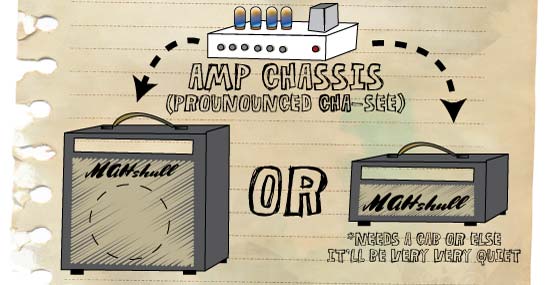
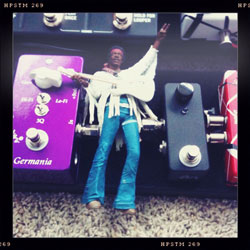
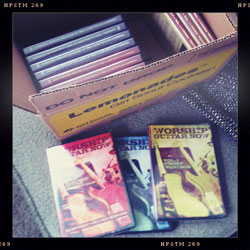
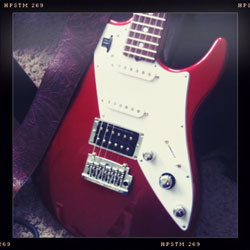
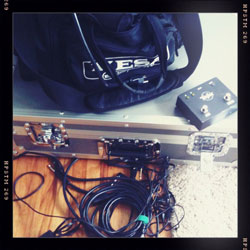

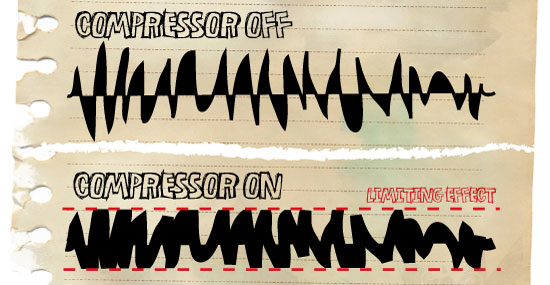
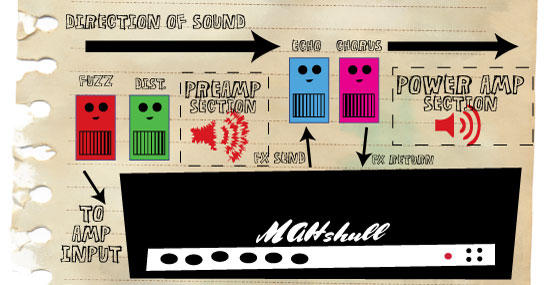
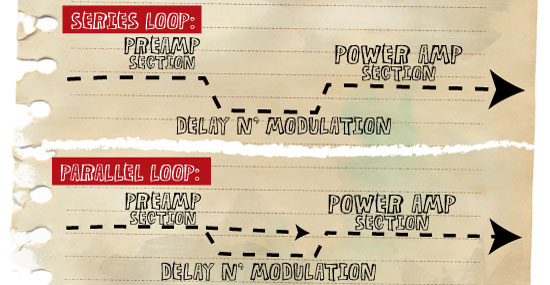
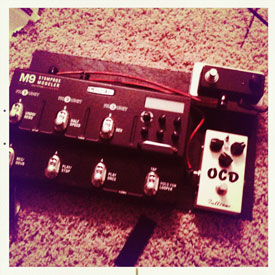


Follow Me